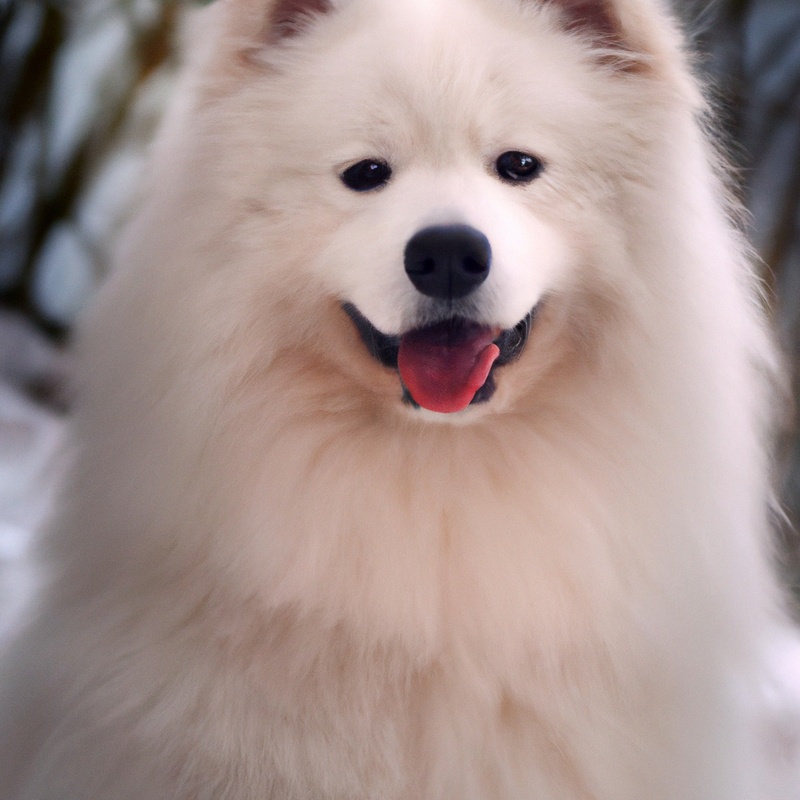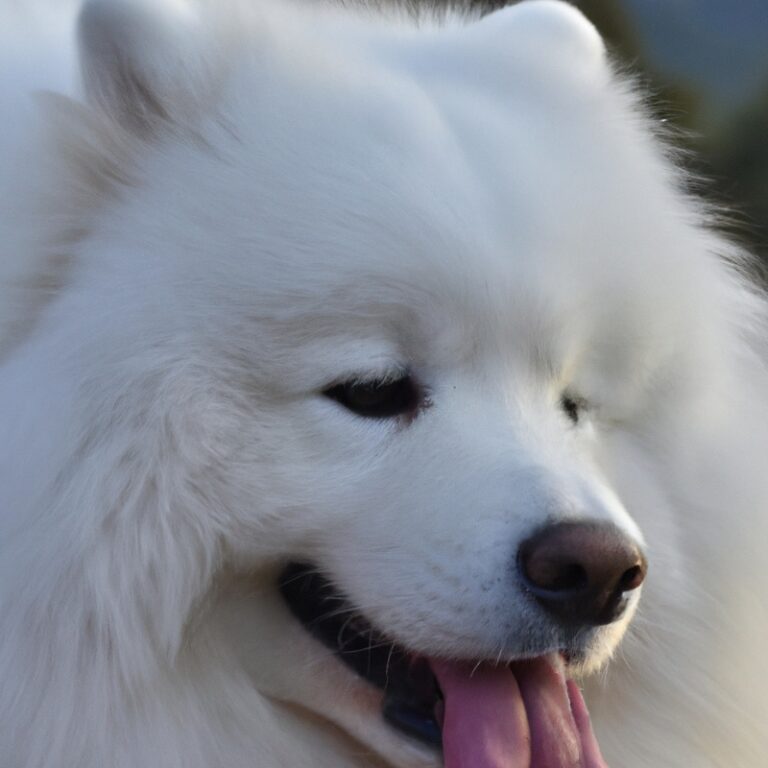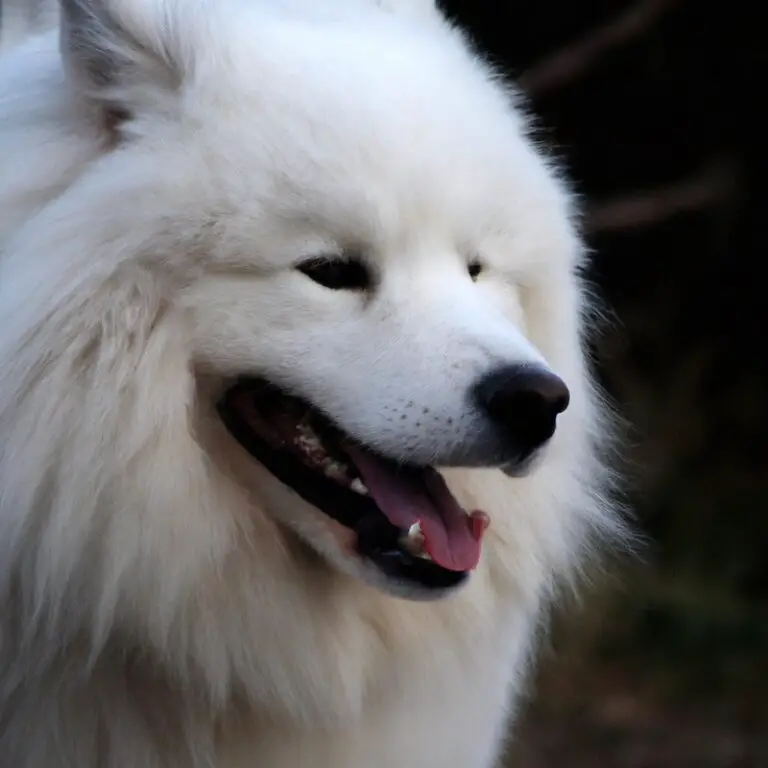How To Prevent Samoyed From Chewing Furniture?
Key Takeaways:
- Provide appropriate chew toys
- Train your Samoyed to discourage chewing
- Use deterrent sprays or behavioral training techniques
- Ensure your Samoyed receives enough mental and physical stimulation
Are you tired of coming home to find your prized furniture in shambles, courtesy of your mischievous Samoyed? If you’re nodding your head in frustration, you’re not alone.
Dealing with a pup who has a penchant for chewing everything in sight can be exasperating.
But fear not, because in this article, I’m going to share some valuable insights and techniques to help you prevent your Samoyed from turning your home into a chew toy wonderland. From understanding why they chew to providing alternative outlets and addressing behavioral issues, we’ll cover it all.
So, let’s put an end to the furniture destruction and keep your Samoyed happy and your furniture intact.
| Method | Description |
|---|---|
| 1. Provide alternatives | Give your Samoyed appropriate chew toys and bones to redirect their chewing behavior. |
| 2. Supervise and redirect | Keep a close eye on your Samoyed and redirect their attention to appropriate chew items whenever they start chewing furniture. |
| 3. Crate train | Use crate training to limit your Samoyed’s access to furniture when you are unable to supervise them. |
| 4. Taste deterrents | Apply taste deterrents on furniture to discourage your Samoyed from chewing it. |
| 5. Increase exercise and mental stimulation | Make sure your Samoyed gets enough physical exercise and mental stimulation to prevent boredom, which can lead to destructive chewing. |
Understanding why Samoyeds chew furniture
Natural chewing behavior of Samoyeds
Samoyeds have a natural tendency to chew, which is rooted in their genetic makeup. This behavior is common among many dog breeds and serves several purposes.
Chewing helps them explore their surroundings and relieve boredom or stress.
It also helps keep their teeth clean and their jaws strong. Providing appropriate chew toys and regularly engaging with your Samoyed can help redirect their chewing behavior and prevent them from targeting your furniture.
Additionally, ensuring they receive regular exercise and mental stimulation can reduce their urge to chew.

Boredom and lack of mental stimulation
Samoyeds may chew furniture due to boredom and lack of mental stimulation.
When these dogs don’t have enough activities to keep them engaged, they may resort to chewing as a way to relieve their boredom.
Providing them with plenty of exercise, interactive toys, and mental challenges can help prevent this behavior.
Taking them for long walks, engaging in play sessions, and introducing puzzle toys can keep their minds stimulated and prevent them from turning to furniture chewing as a form of entertainment.

Teething and dental health concerns
Teething is a natural process that Samoyeds go through, and during this time, they may experience discomfort, leading them to chew on furniture.
It is important to understand that teething is a temporary phase.
However, chewing on furniture can cause dental health concerns such as broken teeth or gum infections.
To prevent this, provide appropriate chew toys and offer regular dental care, like brushing their teeth and regular veterinary check-ups.
Additionally, considering edible dental chews can help promote good oral health for your Samoyed.
Providing alternative outlets for chewing
Providing appropriate chew toys
When it comes to preventing your Samoyed from chewing furniture, providing appropriate chew toys is crucial. Here are some key considerations to keep in mind:
- Look for toys made specifically for heavy chewers, as Samoyeds are known to have strong jaws.
- Opt for durable materials like rubber or nylon that can withstand your dog’s chewing habits.
- Variety is important: offer different textures and shapes to keep your dog engaged and interested.
- Interactive toys, like treat-dispensing puzzles, can provide mental stimulation and help redirect your dog’s chewing behavior.
- Regularly inspect the toys for any signs of damage or wear and replace them if necessary.
- Rotate the toys every now and then to keep your dog excited and prevent boredom.
Remember, providing appropriate chew toys is an effective way to redirect your Samoyed’s chewing instincts and protect your furniture.

Active play and exercise
One effective way to prevent your Samoyed from chewing furniture is by ensuring they get enough active play and exercise.
Regular exercise helps to fulfill their physical and mental needs, reducing their desire to chew on things they shouldn’t.
Engage in activities like interactive games, brisk walks, or throwing a ball for them to fetch.
Dedicate playtime and exercise sessions each day to keep your Samoyed happy, stimulated, and less inclined to chew on your furniture.
Puzzle toys and interactive feeding
Puzzle toys and interactive feeding are great ways to prevent your Samoyed from chewing on furniture.
These toys engage your dog’s mind and help satisfy their natural chewing instincts.
Puzzle toys, which require your dog to problem solve, provide mental stimulation and keep them occupied.
Interactive feeding, such as using treat-dispensing toys or food puzzles, can turn mealtime into a fun and engaging activity.
These methods redirect your Samoyed’s chewing behavior towards appropriate outlets, reducing the likelihood of furniture destruction.
Proper training and management techniques
Teaching “leave it” and “drop it” commands
To teach your Samoyed the “leave it” command, start by showing them a treat in your closed fist.
When they start showing interest, say “leave it” and wait for them to lose interest and look away.
Then, reward them with a different treat.
Repeat this process until they understand the command.
For the “drop it” command, hold an item that your Samoyed likes, like a toy.
Say “drop it” and show them a treat.
When they release the item, reward them.
Practice this command with different items until they consistently drop them when commanded.
Remember to be patient and consistent in your training.
With practice, your Samoyed will learn these commands and hopefully stop chewing on your furniture.
Using deterrents and taste aversion sprays
One effective way to prevent your Samoyed from chewing furniture is by using deterrents and taste aversion sprays.
These products are designed to discourage your dog from chewing on things they shouldn’t.
- Deterrent sprays can be applied directly to the furniture to make it unappealing to your dog. The bitter taste or strong scent will deter them from chewing.
- Taste aversion sprays are safe to use and have a strong taste that dogs find unpleasant. Spraying them on furniture will discourage your Samoyed from chewing.
Remember to consistently apply the deterrents and sprays as directed on the packaging to see the best results.
Crating or confining when unsupervised
When your Samoyed is unsupervised, crating or confining them can be an effective way to prevent chewing on furniture. A crate provides a safe space for your dog, mimicking a den-like environment where they feel secure.
Make sure to choose a crate that’s appropriate for the size of your Samoyed and provide them with bedding and toys to keep them occupied.
Alternatively, you can confine them to a designated area with baby gates or playpens. Always ensure that the confinement area is safe and free from any hazards.
Creating a chew-proof environment
Managing access to furniture and valuables
To manage your Samoyed’s access to furniture and valuables, there are a few things you can do. First, make sure to provide plenty of appropriate chew toys and bones to redirect their chewing instincts.
Additionally, using baby gates or closing off rooms can limit their access to certain areas.
It’s also helpful to keep valuable items out of reach, either by placing them on high shelves or using storage containers with secure lids. Finally, consistently supervising and redirecting your dog’s behavior will go a long way in preventing any unwanted chewing mishaps.
Using barriers and pet gates
Using barriers and pet gates is an effective way to prevent your Samoyed from chewing furniture.
- Place pet gates in areas where your dog is not allowed, such as the living room or bedroom.
- Use baby gates or playpens to confine your dog to a safe area when you’re unable to supervise them.
- Install barriers such as door gates or barriers to keep your dog out of rooms where you don’t want them to go.
- Secure furniture and belongings behind pet gates or barriers to prevent your Samoyed from accessing them.
Remember, consistency is key when using barriers and pet gates. Make sure to train your dog to respect these boundaries by rewarding good behavior and redirecting them when they show interest in chewing furniture.
Applying bitter apple or other deterrents
If you’re dealing with a Samoyed who loves to chew on your furniture, applying bitter apple or other deterrents can be effective. These products have a strong taste that most dogs find unpleasant, deterring them from chewing.
Just apply the bitter apple or other deterrents to the surfaces your Samoyed is prone to chewing.
Remember to follow the instructions on the product and reapply as needed. It’s important to note that some dogs may still ignore the taste, so it’s best to combine this method with proper supervision and chew toy training.
Addressing underlying behavioral issues
Separation anxiety and destructive behavior
Separation anxiety can lead to destructive behavior in Samoyeds.
When you leave your Samoyed alone, they may feel anxious and stressed, causing them to chew on furniture or other items.
To address this issue, it’s important to gradually acclimate your dog to being alone.
Start by leaving them alone for short periods and gradually increase the time.
Provide interactive toys or puzzles to keep them occupied.
Consider crate training, as it can create a sense of security for your Samoyed.
Seeking professional help from a dog trainer or behaviorist can also be beneficial.
Seeking professional help if needed
If you find that your Samoyed’s chewing behavior is persistently causing damage to your furniture, it may be time to seek professional help.
A professional dog trainer or behaviorist can assess the underlying reasons behind your dog’s chewing habit and provide tailored strategies to address it.
They can offer guidance on training techniques, redirecting your dog’s chewing behavior, and creating an appropriate environment for your Samoyed.
Remember, seeking professional help can help you understand your dog’s behavior better and find effective solutions.
Consistency and positive reinforcement in training
Consistency and positive reinforcement are key elements in training your Samoyed to prevent them from chewing furniture.
By consistently reinforcing positive behaviors with rewards and praise, you can help them understand what is expected of them.
Using treats, toys, and verbal affirmations as rewards will motivate your Samoyed to follow the desired behavior.
Remember to be patient, as training takes time and repetition.
Stay consistent in your approach and avoid punishment, as it can create fear and confusion.
With positive reinforcement and consistency, you can help your Samoyed develop good habits and prevent them from chewing on furniture.
Frequently Asked Questions (FAQs)
Why does my Samoyed chew furniture when I am not home?
Your Samoyed may chew furniture when you are not home due to a few reasons. Firstly, they may be bored and chewing provides them with an outlet for their energy.
Secondly, they may be experiencing separation anxiety and chewing helps them cope with their stress.
Thirdly, they may simply be exploring their environment and chewing on furniture is an instinctive behavior for dogs. To prevent this behavior, ensure your Samoyed gets regular exercise, provide them with chew toys, and consider crate training to alleviate separation anxiety.
What types of chew toys are safe for Samoyeds?
Samoyeds are known for their strong chewing tendencies, so it’s important to provide them with safe chew toys. Here are a few types of chew toys that are safe for Samoyeds:
- Rubber Chew Toys: Look for durable rubber toys specifically designed for heavy chewers. These toys are tough enough to withstand your Samoyed’s strong jaws.
- Rope Toys: Rope toys are a great option as they provide both chewing and playtime. Just make sure the ropes are made from natural, non-toxic materials.
- Dental Chew Toys: Not only do these toys satisfy your Samoyed’s urge to chew, but they also help promote dental health by reducing plaque and tartar buildup.
- Kong Toys: Kong toys are made from a durable rubber material and can be filled with treats or peanut butter to keep your Samoyed occupied and engaged.
Remember to always supervise your Samoyed while they’re playing with chew toys and regularly inspect the toys for any signs of damage. Safety should always be a top priority!
How long does it take to stop my Samoyed from chewing furniture?
Stopping a Samoyed from chewing furniture can take anywhere between a few weeks to several months.
It depends on various factors such as the dog’s age, temperament, and consistency in training.
Patience and persistence are key when teaching your Samoyed what is acceptable to chew on.
Providing appropriate chew toys, supervision, and positive reinforcement can help speed up the process.
Consistently redirect your Samoyed’s attention to the appropriate toys and discourage chewing on furniture.
Final Verdict
Understanding the reasons behind a Samoyed’s chewing behavior is crucial in preventing furniture destruction. Providing alternative outlets for chewing, such as appropriate chew toys and engaging play sessions, can redirect their attention.
Proper training techniques, including teaching “leave it” and “drop it” commands, along with using deterrents and confining when unsupervised, can also be effective.
Creating a chew-proof environment by managing access and using bitter apple sprays or barriers is essential. If underlying behavioral issues are present, seeking professional help and maintaining consistency in training are key.
Remember, with patience and consistency, you can help your Samoyed break their chewing habits and save your furniture.







